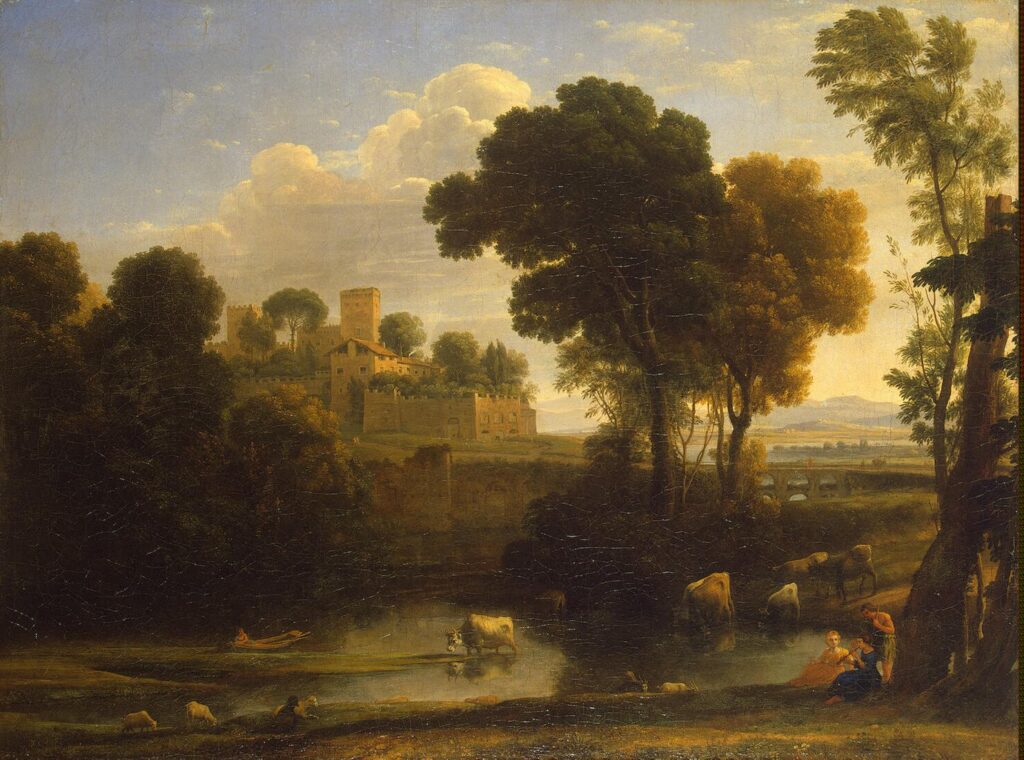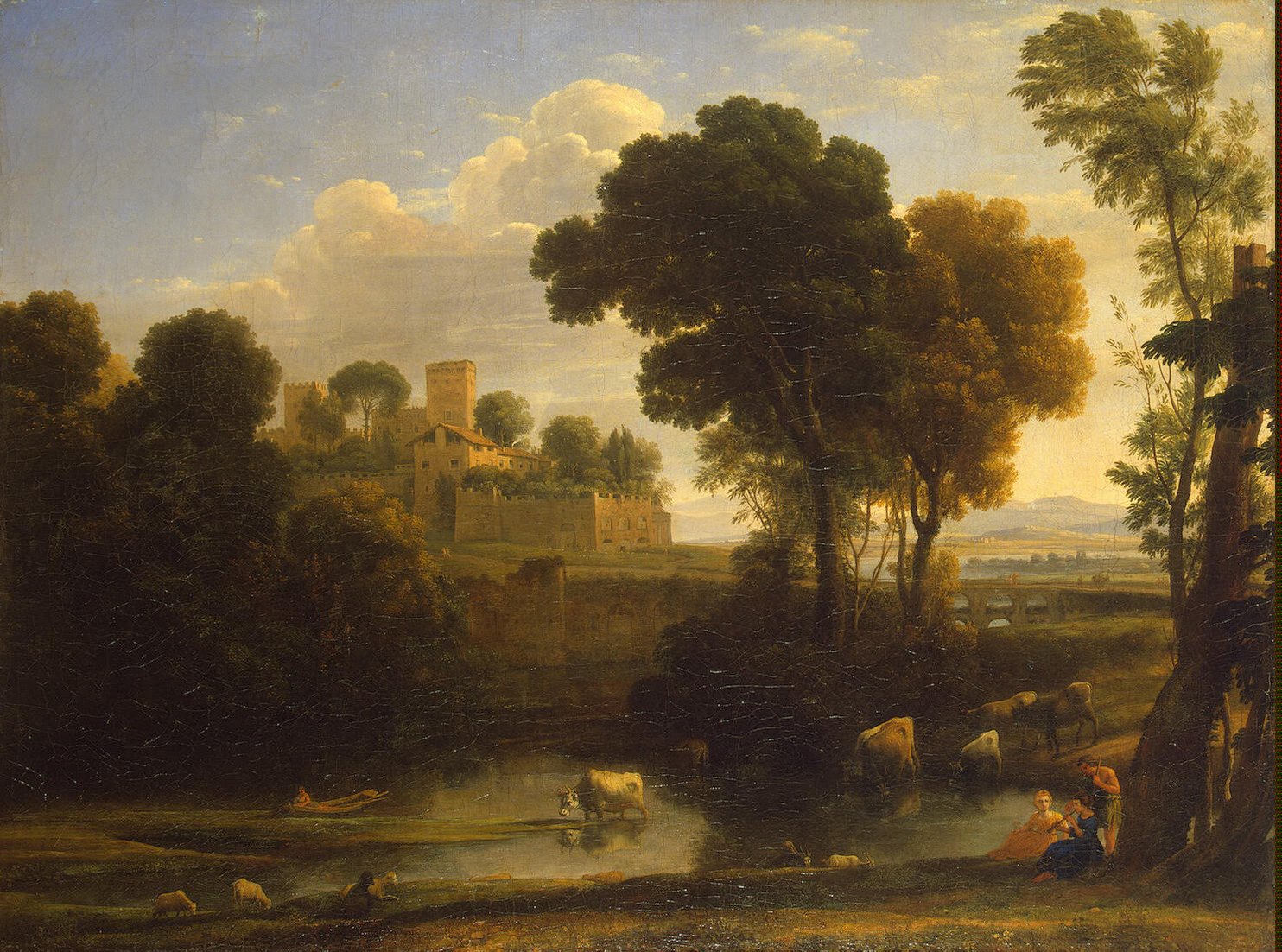
The Enchanting World of Italian Renaissance Landscape Painting
The Italian Renaissance, a period of unparalleled artistic and intellectual flourishing, left an indelible mark on the world of art. While often celebrated for its portraits and religious scenes, Italian Renaissance landscape painting offers a captivating window into the era’s evolving relationship with nature and the burgeoning humanist spirit. This article delves into the key characteristics, influential artists, and lasting legacy of this significant genre.
The Rise of Landscape in Italian Renaissance Art
Prior to the Renaissance, landscapes in paintings typically served as mere backdrops for religious or mythological narratives. However, as Renaissance artists embraced classical ideals and a renewed interest in the natural world, landscapes began to take on a more prominent role. This shift reflected a growing appreciation for the beauty and harmony of nature, as well as a desire to depict the world with greater accuracy and realism. The Italian Renaissance landscape painting became not just a setting, but an integral part of the artwork’s meaning and emotional impact.
The rediscovery of classical texts, particularly those of Pliny the Elder and Vitruvius, played a crucial role in shaping the Renaissance understanding of landscape. These texts emphasized the importance of observation and accurate representation, encouraging artists to study nature firsthand. Furthermore, the development of linear perspective, pioneered by artists like Filippo Brunelleschi, allowed for the creation of more convincing and immersive depictions of space, further enhancing the realism of Italian Renaissance landscape painting.
Key Characteristics of Italian Renaissance Landscapes
Italian Renaissance landscape painting is characterized by several distinctive features:
- Idealized Nature: Rather than simply replicating the natural world, Renaissance artists often sought to idealize it, creating landscapes that were harmonious, balanced, and aesthetically pleasing. This often involved incorporating elements of classical architecture and carefully arranging natural features to create a sense of order and beauty.
- Atmospheric Perspective: Artists employed atmospheric perspective, also known as aerial perspective, to create a sense of depth and distance. This technique involved using lighter colors and softer edges for objects in the background, simulating the effect of atmosphere on the perception of distance.
- Human Presence: While landscape became more prominent, human figures often remained an important element, albeit often smaller and more integrated into the scene. These figures could be engaged in pastoral activities, religious narratives, or simply observing the beauty of nature. The presence of humans served to emphasize the relationship between humanity and the natural world.
- Symbolism: Landscapes were often imbued with symbolic meaning, reflecting the philosophical and religious beliefs of the time. For example, a serene and orderly landscape might represent the harmony of the universe, while a rugged and untamed landscape could symbolize the challenges and uncertainties of life.
Influential Artists and Their Contributions
Several artists made significant contributions to the development of Italian Renaissance landscape painting. Here are a few notable examples:
Leonardo da Vinci
While primarily known for his portraits and scientific studies, Leonardo da Vinci was also a keen observer of nature and incorporated detailed landscapes into his paintings. His use of sfumato, a technique that softens edges and creates a hazy atmosphere, added a sense of mystery and depth to his landscapes. The background of the Mona Lisa is a prime example of his innovative approach to Italian Renaissance landscape painting, creating an ambiguous and captivating vista.
Giovanni Bellini
Giovanni Bellini, a Venetian painter, was one of the first artists to give significant importance to landscape in his religious paintings. His landscapes are characterized by their serene beauty, harmonious colors, and careful observation of detail. Bellini’s landscapes often evoke a sense of tranquility and spiritual contemplation. He masterfully blended figures and landscape, creating a cohesive and emotionally resonant image. He is considered a pioneer in Italian Renaissance landscape painting.
Giorgione
Giorgione, a student of Bellini, further developed the Venetian style of landscape painting. His landscapes are often more atmospheric and lyrical than those of his teacher, and he placed even greater emphasis on the mood and emotional impact of the scene. The Tempest, one of Giorgione’s most famous paintings, features a mysterious and evocative landscape that plays a central role in the artwork’s overall meaning. The Italian Renaissance landscape painting in this work is less a backdrop and more a central protagonist.
Titian
Titian, another Venetian master, was known for his vibrant colors and dynamic compositions. His landscapes are often more dramatic and expressive than those of Bellini and Giorgione, reflecting his interest in the power and beauty of nature. Titian’s landscapes are often filled with light and movement, creating a sense of energy and vitality. He pushed the boundaries of Italian Renaissance landscape painting, exploring more dramatic and emotional representations of nature.
Piero della Francesca
Piero della Francesca, renowned for his mastery of perspective and geometric forms, incorporated meticulously rendered landscapes into his paintings. His landscapes often possess a sense of clarity and order, reflecting his mathematical approach to art. The landscapes in his frescoes, such as those in the Basilica di San Francesco in Arezzo, provide a serene and balanced backdrop for his figures. He brought a unique clarity to Italian Renaissance landscape painting.
The Evolution of Landscape Painting Beyond the Renaissance
The foundations laid by Italian Renaissance landscape painting significantly influenced the development of landscape art in subsequent periods. The Mannerist and Baroque periods saw landscapes become even more dramatic and expressive, while the Romantic era celebrated the sublime and untamed aspects of nature. Impressionism further revolutionized landscape painting by focusing on capturing the fleeting effects of light and atmosphere.
Even in contemporary art, the legacy of Italian Renaissance landscape painting can be seen in the continued interest in depicting and interpreting the natural world. Artists continue to explore the relationship between humanity and nature, using landscape as a means of expressing personal, social, and environmental concerns.
The Enduring Legacy of Italian Renaissance Landscape Painting
Italian Renaissance landscape painting represents a pivotal moment in the history of art, marking a shift from landscapes as mere backdrops to landscapes as integral components of artistic expression. The Renaissance artists’ careful observation of nature, their mastery of perspective, and their ability to imbue landscapes with symbolic meaning paved the way for future generations of landscape painters. Their works continue to inspire and captivate viewers, offering a glimpse into the beauty and harmony of the natural world as seen through the eyes of the Renaissance masters. The genre continues to inform and inspire contemporary artists working with landscape themes.
Studying Italian Renaissance landscape painting provides valuable insights into the cultural, intellectual, and artistic values of the period. It reveals a growing appreciation for the natural world, a desire to understand and represent it accurately, and a belief in the power of art to elevate and inspire. The artistry and innovation of these Renaissance painters continue to resonate today, reminding us of the enduring beauty and power of landscape art. [See also: Famous Renaissance Artists] [See also: History of Landscape Art]
In conclusion, the development of Italian Renaissance landscape painting was a crucial step in art history, leading to a greater appreciation and understanding of the natural world. The artists of this era, through their innovative techniques and keen observation, created landscapes that were not only beautiful but also imbued with meaning and emotion. Their legacy continues to inspire artists and art lovers alike, reminding us of the enduring power of art to connect us to the world around us. The meticulous detail and careful composition found in Italian Renaissance landscape painting offer a unique perspective on a transformative period in art history, highlighting the evolving relationship between humans and their environment. This artistic exploration of nature’s beauty and its symbolic representation remains relevant and inspiring, solidifying the importance of Italian Renaissance landscape painting in the broader context of art history.
The influence of Italian Renaissance landscape painting extends beyond the art world, impacting our understanding of the environment and our place within it. By celebrating the beauty and harmony of nature, these artists encouraged a deeper appreciation for the natural world, a sentiment that remains vital in today’s world facing environmental challenges. The legacy of Italian Renaissance landscape painting serves as a reminder of the importance of preserving and protecting the natural world for future generations.

